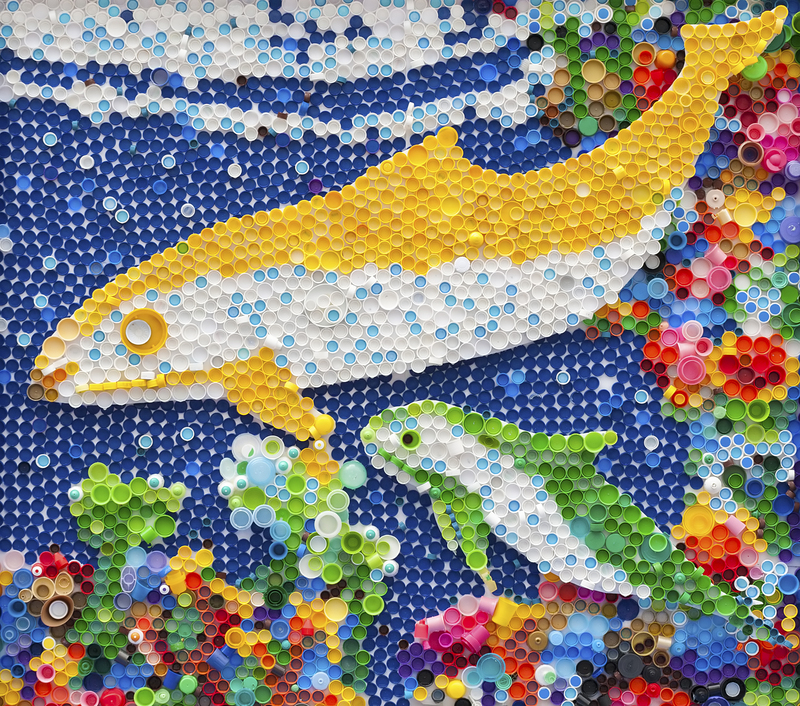Innovative Approaches to Reducing Plastic Waste
Plastic pollution has become one of the most pressing environmental challenges of our time. With global plastic production exceeding 380 million tons each year, much of it ends up in landfills, oceans, and natural habitats, severely impacting wildlife and human health. Fortunately, emerging innovations and new approaches to reducing plastic waste are paving the way for a more sustainable future. In this comprehensive guide, we explore the latest trends, groundbreaking solutions, and actionable strategies to combat plastic pollution and foster a cleaner planet.

Understanding the Plastic Problem
Before delving into the most innovative solutions, it's essential to comprehend why plastic waste is such a significant issue. Plastics are durable, lightweight, and inexpensive, making them popular in a range of industries. However, these same qualities make them persistent in the environment. Over 8 million tons of plastic enter the world's oceans every year, endangering marine life and entering the food chain.
- Slow Decomposition: Most plastics take hundreds of years to decompose.
- Harmful Microplastics: Over time, plastics break into microplastics, infiltrating soil, water, and food.
- Health Impacts: Chemicals leaching from plastics can harm humans and animals alike.
Emerging Solutions: Rethinking Our Relationship with Plastics
1. The Rise of Biodegradable and Compostable Plastics
One of the most promising innovations to reduce plastic waste is the development of biodegradable and compostable plastics. Unlike traditional plastics, these alternatives are engineered to break down more quickly in natural environments.
- Plant-Based Plastics: Made from renewable resources like corn starch, sugarcane, or potato starch, these bioplastics offer a lower carbon footprint and enhanced biodegradability.
- PHA and PLA Plastics: Polyhydroxyalkanoates (PHA) and polylactic acid (PLA) are notable for their ability to fully degrade in industrial composting facilities.
- Edible Packaging: Some companies are now producing edible food wrappers, making plastic packaging waste a potential thing of the past.
Benefits: By using biodegradable plastics, we minimize landfill waste, reduce pollution, and even lower greenhouse gas emissions during production.
2. Advancements in Plastic Recycling Technologies
Another key innovation is the advancement in plastic recycling techniques. Traditional mechanical recycling is being supplemented and, in some cases, replaced by cutting-edge solutions such as:
- Chemical Recycling: Breaks plastics down to their original molecules, allowing for the creation of brand-new plastic products without quality loss.
- Enzymatic Recycling: Utilizes specially engineered bacteria or enzymes to dissolve plastics at a molecular level, transforming them into reusable materials.
- Multi-Layer Recycling: Addresses previously unrecyclable materials like flexible packaging films by separating and recycling each layer.
These innovative recycling methods enable more types of plastics to be continuously reused, greatly diminishing the amount that ends up as waste.
Product Redesign and Circular Economy Principles
3. Designing for Durability and Reuse
Rethinking product design is crucial for reducing plastic waste. Innovative design strategies now focus on creating items that are durable, reusable, and easier to recycle.
- Modular Products: Items designed with interchangeable parts for repair and longevity.
- Refillable Packaging: Popular with brands offering personal care or cleaning products, refillable containers cut down drastically on single-use plastics.
- Concentrated and Solid Formats: Shampoo bars and concentrated detergents reduce the need for bulky plastic packaging.
By investing in better design, companies can help consumers make more environmentally friendly choices and extend the lifecycle of plastic materials.
4. Embracing the Circular Economy
The circular economy is a transformative approach to reducing plastic waste by keeping materials in use for as long as possible. This system prioritizes:
- Reuse over disposal
- Sharing and repairing rather than replacing
- Recycling and upcycling in place of landfilling
Companies like TerraCycle and Loop are leading the way with innovative return-and-refill schemes for packaging. These models not only reduce waste but also create economic opportunities through green jobs and recycling markets.
Cutting-Edge Material Innovations
5. Algae-Based and Mushroom-Based Alternatives
Startups and scientists are exploring the power of nature to create eco-friendly replacements for fossil-fuel plastics. Two of the most exciting materials are:
- Algae Plastics: Renewable and biodegradable, algae-based plastics are being developed for everything from food packaging to single-use utensils.
- Mushroom Mycelium: This fast-growing fungus forms a strong, lightweight material ideal for sustainable packaging and even construction materials!
Such innovations harness natural processes to produce materials that break down harmlessly after use, shrinking our plastic footprint.
6. Ocean-Bound Plastic Recovery
One critical aspect of solving the plastic waste problem is addressing plastics already in the environment, particularly in our oceans. Innovative companies are now:
- Deploying floating booms and drones to intercept plastics in rivers before they reach the ocean
- Recovering ocean-bound plastics to reintegrate them into products like shoes, bags, and outdoor gear
- Supporting coastal clean-up initiatives and circular supply chains involving local communities
This approach not only removes existing plastic pollution but also provides incentives for circularity and ethical sourcing.
Smart Technologies for Waste Monitoring and Management
7. AI and Big Data in Plastic Waste Reduction
Technology plays a pivotal role in optimizing how we manage and reduce plastic waste. Smart waste management systems utilize:
- Artificial Intelligence (AI): To identify, sort, and separate different types of plastic more efficiently in recycling facilities.
- Internet of Things (IoT) Sensors: To monitor waste bins, forecast fill levels, and streamline collection routes--cutting costs and reducing environmental impact.
- Big Data Analytics: To map the entire plastic lifecycle and identify high-impact intervention points for maximum waste reduction.
With these technologies, cities and businesses can make data-driven decisions to minimize plastic waste generation and improve recycling rates.
Community Engagement and Policy Innovation
8. Policy Levers and Corporate Responsibility
Innovative policy frameworks help shape consumer and corporate behavior in favor of plastic reduction. A few impactful strategies include:
- Single-Use Plastic Bans: Many countries are banning single-use items like plastic bags, straws, and cutlery.
- Extended Producer Responsibility (EPR): Policies that hold manufacturers accountable for the entire lifecycle of their plastic products, from design to end-of-life.
- Recycling Mandates and Incentives: Tax breaks and subsidies for companies that use recycled plastics, as well as mandatory recycling content in packaging.
Such measures create financial and regulatory motivation for industries to invest in alternative materials and responsible waste management.
9. Consumer Awareness and Behavior Change
No solution can succeed without public participation. Community engagement and awareness campaigns help shift attitudes and encourage sustainable habits. Effective approaches include:
- Plastic-free challenges to inspire lifestyle changes
- Reusable product swaps and bulk shopping initiatives
- School programs and public art installations raising awareness about plastic pollution
When individuals and communities take the lead, they can drive significant reductions in plastic waste and even pressure corporations and governments to adopt greener practices.
Innovative Startups and Global Case Studies
10. Pioneering Companies and Local Heroes
All around the world, ground-breaking startups and community groups are blazing new trails in the fight against plastic waste. Some notable examples include:
- Notpla: Creates edible seaweed-based sachets for beverages, eliminating the need for plastic cups.
- Avani Eco: Produces biodegradable bags and food containers from cassava starch in Indonesia, tackling plastic pollution at its source.
- The Ocean Cleanup: Aims to remove 90% of floating ocean plastic with innovative cleanup devices and river interception systems.
- Plastic Bank: Empowers waste pickers in developing countries to exchange collected plastic for goods, services, or digital currency.
These success stories prove that with creativity, determination, and innovative approaches to reducing plastic waste, transformative change is possible on both local and global scales.

How You Can Get Involved
While industry and government-led efforts are crucial, every individual can contribute to reducing plastic waste in their daily life. Here are actionable steps you can take:
- Use reusable bags, bottles, and containers instead of single-use plastics.
- Choose products with minimal or biodegradable packaging.
- Support brands committed to sustainability and recycled content.
- Participate in clean-up efforts in your community or share plastic-pollution awareness resources on social media.
- Recycle correctly and stay informed about your local recycling guidelines.
Small actions make a big difference when practiced collectively, accelerating the broader movement toward a plastic-free future.
The Future of Plastic Waste Reduction
As our understanding of the plastic pollution crisis deepens, so too does our capacity for innovation and adaptation. The solutions outlined above demonstrate the power of new technologies, materials, and mindsets to dramatically reduce plastic waste. Success hinges on collaboration--between governments, businesses, scientists, and everyday people--all striving toward a common goal.
By embracing innovative approaches to reducing plastic waste, we protect our ecosystems, improve public health, and create a more resilient, sustainable world. As awareness and commitment grow, the momentum for change builds, ensuring a brighter and cleaner legacy for future generations.
Together, we can turn the tide against plastic pollution--one innovation at a time.